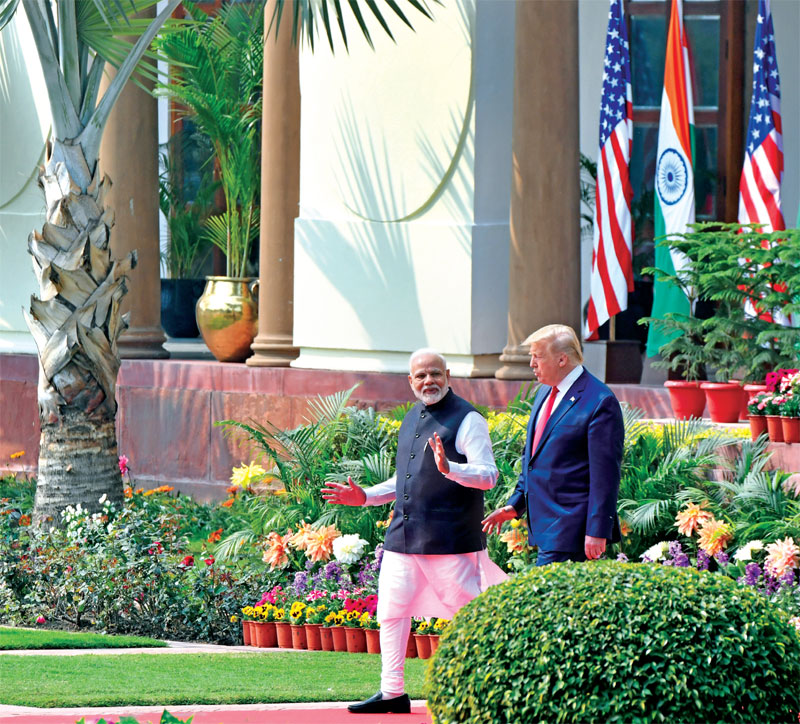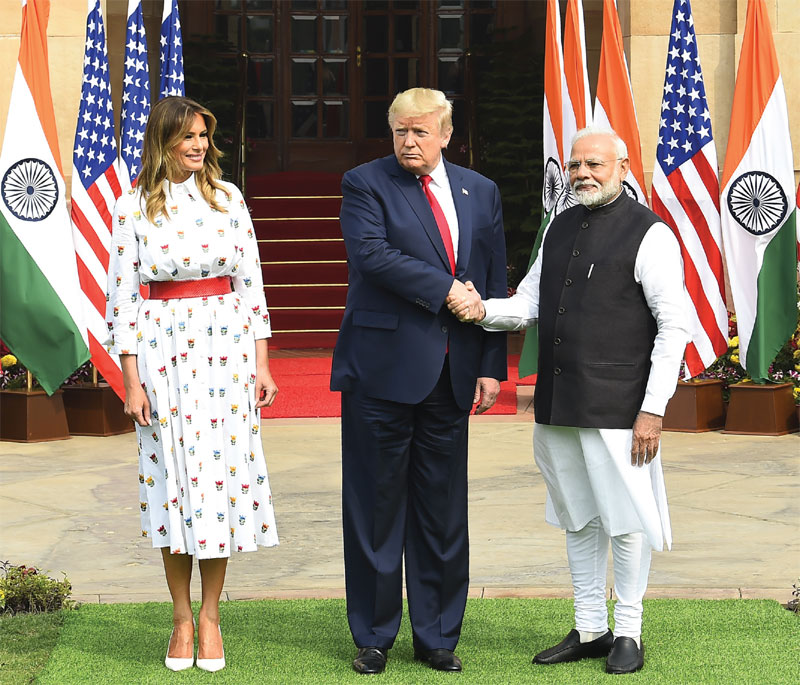Comprehensive Global Strategic Partnership can take Indo-US ties to a new level
Pravin Sawhney
After the recent two-day jamboree (February 24 and 25) of President Donald Trump to India, relations between India and the United States have been elevated to Comprehensive Global Strategic Partnership (CGSP). This is significant. How much the CGSP delivers would depend on two factors.

One, India’s acceptance of US’ Blue Dot Network proposal discussed during the Trump visit as a purported answer to China’s Belt and Road Initiative (BRI). Accepting it could result in India taking a hardened position on possibility of cooperation with China’s BRI through the Wuhan understanding of India-China-Plus mechanism; and Two, strategic trust, which remains wobbly.
What is equally important from CGSP’s perspective is the distance the two sides have traversed since 1991 when the US Lt Gen. Claude M. Kicklighter visited India to explore military cooperation. The outcome of 29 years of bilateral relationship, with its ups and downs, is expected to give political, security, defence and military fillip to the elevated partnership.
Traditional wisdom informs that India, under Prime Minister Narendra Modi would likely invest wholeheartedly in the CGSP since the strategic fraternity believes that closeness with Washington deters China. There has been little basis to support this thesis especially after the coming of the fifth-generation leadership under general secretary Xi Jinping in China in November 2012. Another reason for comfort with the US has been the absence of the Soviet Union. Despite chanting the mantra of strategic autonomy, India has, since Independence, always carved a regional role for itself under the benediction of a global power. In the present century, the US has replaced the Soviet Union.
The bilateral cooperation, however, would have remained an unconsummated marriage, had the US not taken the lead by inserting substance into the CGSP which addresses the regional Free and Open Indo Pacific strategy. The reason for this half-hearted outreach has been India’s unwillingness to publicly identify China as the source of its strategic and military quandary. Consequently, India’s strategic dilemma, overtime, would have increased not diminished as BRI would have crept closer home into South Asia.
To place the CGSP into perspective, there is a need to step back. On 30 May 2018, the Trump administration renamed its Pacific Command as the Indo-Pacific Command to signal the centrality of India. This was a quantum jump from the US’ Bush administration’s reference to India in March 2005 as the net security provider in the Indian Ocean Region (IOR) — a phrase that Indian admirals have been unable to understand in quantifiable military terms. The region spanning the two oceans — Western Pacific and Indian — which is the responsibility of the Indo Pacific Command too got a new name: Indo Pacific region.

The stage was set for the geostrategic clash of the century between the US-led Indo Pacific strategy and the China- (and Russia) supported Asia Pacific strategy. The Modi government’s acceptance of the CGSP would suggest bolder Indian participation in the Indo-Pacific strategy. This is a big deal since the US appears to have got India onboard its strategy without naming China — the target of its strategy.
According to the joint statement issued after the Trump visit: ‘Prime Minister Modi and President Trump decided to strengthen consultation through the India-US-Japan trilateral summits; the 2+2 Ministerial meeting mechanism of the Foreign and Defence Ministers of India and the United States; and the India-US-Australia-Japan Quadrilateral consultations, among others. Prime Minister Modi and President Trump looked forward to enhanced maritime domain awareness sharing among the United States, India, and other partners.’
While India’s acceptance of the Indo-Pacific strategy has never been so clear, the emphasis in the joint statement suggests highest level of political deliberations; not on the military aspects though which have (deliberately) been kept limited to information sharing between India and the US and other major democracies apprehensive about China’s rise. The reason for this is that, unlike the Asia-Pacific strategy, the Indo-Pacific strategy is still a concept without key ingredients: clearly defined adversary, and roadmap and mechanism to manage the adversary. This is what political confabulations are expected to deliver, if at all.
The BRI as a well-rounded strategy has four constituents intertwined in one whole. These comprise infrastructure building to facilitate commerce and trade; digital globalisation by the Digital Silk Road incorporated in BRI in 2015; the People’s Liberation Army’s involvement in order to protect Chinese assets in BRI nations; and above all, a grand strategy called China Dream. The BRI promises prosperity and cooperative security to all nations on its bandwagon through its clarion call — Asia for Asians. The underplayed story here is that since the two security architectures cannot coexist, the BRI, unveiled to the world in 2013, has stolen a lead over the 2018 Indo-Pacific strategy.
You must be logged in to view this content.

